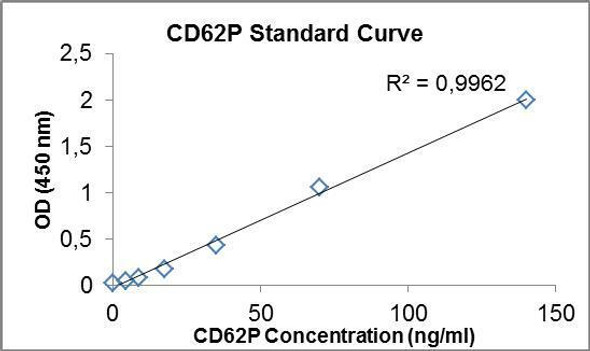Description
| Product SKU: | SBRS0093 |
| Size: | 96T |
| Application: | This kit detects human, mouse and rat 82aa Nesfatin protein. No other active isoforms have been reported. /. |
| Uniprot: | P80303 |
| Gene ID: | 4925 |
| Gene Names: | NEFA / NUCB2 |
| Synonyms: | Nucleobindin-2 (DNA-binding protein NEFA) (Gastric cancer antigen Zg4) (Prepronesfatin) [Cleaved into: Nesfatin-1] |
| Target Species: | Human, Mouse, Rat |
| Compatible Sample Types: | Cell Culture Supernatants, Serum |
| Design Principle: | Competition-based |
| Method of Detection: | Colorimetric |
| Quantitative/Semi-Quantitative: | Quantitative |
| Range: | 0.1-1,000 ng/ml |
| Sensitivity: | 400 pg/ml |
| Recommended Dilution: | Human: 2X, Mouse: 2X, Rat: 2X |
| Storage/Stability: | Standard, biotinylated peptide, and positive control should be stored at -20°C after arrival. Avoid multiple freeze-thaws. The remaining kit components may be stored at 4°C. Opened microplate wells and antibody (Item N) may be stored for up to 1 month at 2 to 8°C. Return unused wells to the pouch containing desiccant pack and reseal along entire edge. |
- Pre-Coated 96-well Strip Microplate
- Wash Buffer
- Standard Peptide
- Assay Diluent(s)
- Biotinylated Peptide
- HRP-Streptavidin
- TMB One-Step Substrate
- Stop Solution
- Assay Diagram
- Positive Control Sample
- Capture Antibody
- Technical Manual
Other materials and equipment required:
The Assay Genie Human Nesfatin PharmaGenie ELISA Kit (SBRS0093) will require other equipment and materials to carry out the assay. Please see list below for further details.
- Distilled or deionized water
- Precision pipettes to deliver 2 ul to 1 ml volumes
- Adjustable 1-25 ml pipettes for reagent preparation
- 100 ml and 1 liter graduated cylinders
- Tubes to prepare standard and sample dilutions
- Orbital shaker
- Aluminum foil
- Saran Wrap
- Absorbent paper
- Microplate reader capable of measuring absorbance at 450nm
- SigmaPlot software (or other software that can perform four-parameter logistic regression models)
- Prepare all reagents, samples and standards as instructed.
- Add 100 ul detection antibody to each well.
- Incubate 1.5 h at RT or O/N at 4°C.
- Add 100 ul standard or sample to each well.
- Incubate 2.5 h at RT.
- Add 100 ul prepared streptavidin solution.
- Incubate 45 min at RT.
- Add 100 ul TMB One-Step Substrate Reagent to each well.
- Incubate 30 min at RT.
- Add 50 ul Stop Solution to each well.
- Read plate at 450 nm immediately.
Obesity, which is characterized by excessive accumulation of adipose tissue in the body, has become one of the greatest public health challenges. Obesity is not only associated with health problems linked to increased weight-dependent pressure overload on lung, joints and bones, but also a important risk factor for life-threatening diseases such as cardiovascular diseases, type 2 diabetes and certain cancers. Nesfatin is a naturally occurring hormone produced by brain cells. Japanese scientists discovered in 2006 that it is responsible for regulating appetite and producing body fat. Excess Nesfatin in the brain leads to a loss of appetite, less frequent hunger, a 'sense of fullness', and a drop in body fat and weight. A lack of Nesfatin in the brain leads to an increase of appetite, more frequent episodes of hunger, an increase of body fat and weight, and the inability to 'feel full.' This latter condition can be artificially induced by injecting an anti-Nesfatin antibody into the brain. The receptors of Nesfatin within the brain are not completely understood, although they are thought to be contained in the hypothalamus and in the solitary nucleus, where Nesfatin is believed to produced via peroxisome proliferator-activated receptors (PPARs).






